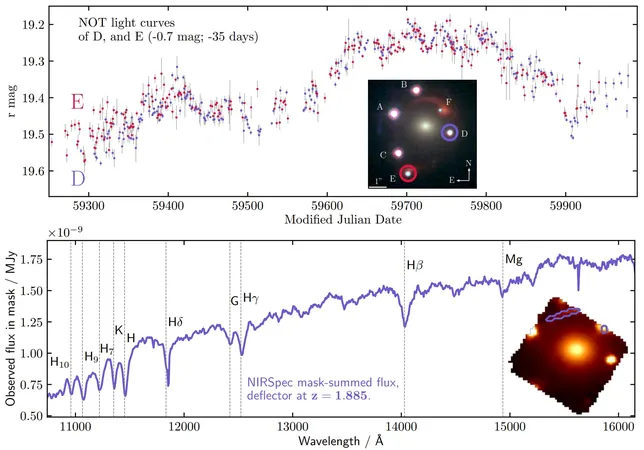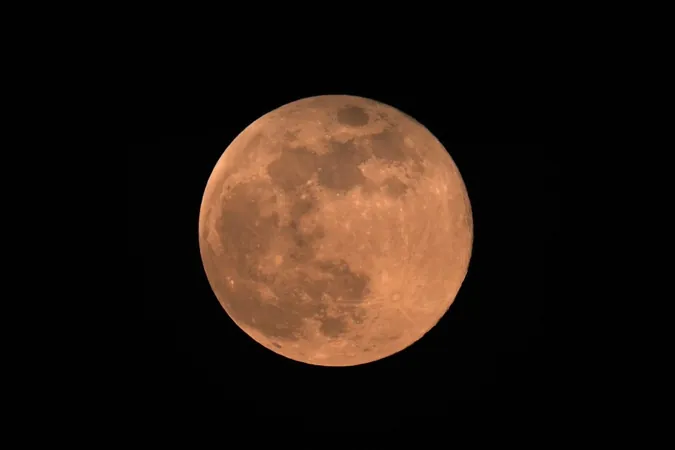
Groundbreaking Discovery: Two Galaxies Found Acting as a Powerful Compound Lens!
2024-11-15
Author: Arjun
Groundbreaking Discovery: Two Galaxies Found Acting as a Powerful Compound Lens!
In a remarkable astronomical breakthrough, an international team of researchers has identified a unique configuration of two galaxies that are aligned perfectly, enabling their combined gravity to function as a compound lens. This captivating discovery, detailed in a recently published paper on the arXiv preprint server, opens new avenues in understanding cosmic phenomena.
Historically, astronomers have observed numerous instances where galaxies or their clusters bend light in accordance with Einstein's theory of general relativity. These gravitational lenses often distort the light from celestial objects located behind them, creating visually stunning and scientifically rich phenomena. Some earlier studies indicated that elliptical galaxies could amplify light from distant sources, but this new research marks the first time scientists have confirmed the existence of two galaxies working together as a compound lens.
What is a Compound Lens?
So, what is a compound lens? Much like its artificial counterparts, which are engineered to correct dispersion, the astronomical version consists of two galaxies precisely aligned to enhance the bending of light. This alignment can create vivid, intricate images of light sources located behind these cosmic structures.
The intriguing system, flagged as J1721+8842, was initially thought to consist of a solitary elliptical galaxy distorting light from a quasar situated beyond it. Over two years of meticulous data analysis led the team to discover that the variations in quasar imagery, initially mistaken for duplicates, were actually multiple light emissions from the same distant source—an exciting revelation confirming the concept of a natural compound lens.
Enhanced Observations with the James Webb Space Telescope
With the enhanced capabilities of the James Webb Space Telescope, the researchers observed a reddish ring amidst the assortment of lights, previously interpreted as an Einstein ring. Further examination unveiled that this ring was, in fact, produced by a second lensing galaxy, a vital clue to understanding the compound nature of this unique cosmic configuration.
Implications of the Discovery
The implications of this discovery extend far beyond mere curiosity. The researchers believe that their findings can significantly improve the precision of measurements relating to the Hubble constant—the rate at which the universe is expanding. This breakthrough could help resolve ongoing discrepancies among scientists regarding the universe's true expansion rate.
Stay tuned as this groundbreaking discovery paves the way for an exciting new chapter in astrophysics, revealing the profound complexities of our universe!




 Brasil (PT)
Brasil (PT)
 Canada (EN)
Canada (EN)
 Chile (ES)
Chile (ES)
 España (ES)
España (ES)
 France (FR)
France (FR)
 Hong Kong (EN)
Hong Kong (EN)
 Italia (IT)
Italia (IT)
 日本 (JA)
日本 (JA)
 Magyarország (HU)
Magyarország (HU)
 Norge (NO)
Norge (NO)
 Polska (PL)
Polska (PL)
 Schweiz (DE)
Schweiz (DE)
 Singapore (EN)
Singapore (EN)
 Sverige (SV)
Sverige (SV)
 Suomi (FI)
Suomi (FI)
 Türkiye (TR)
Türkiye (TR)